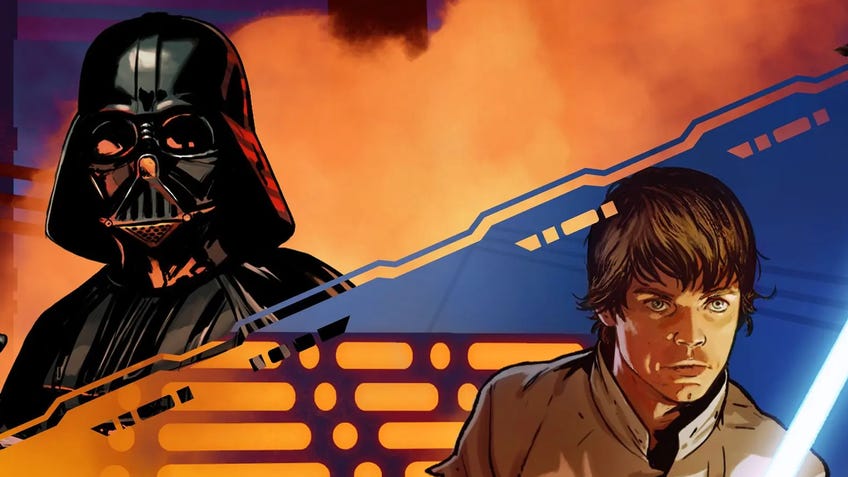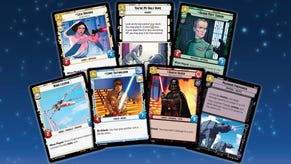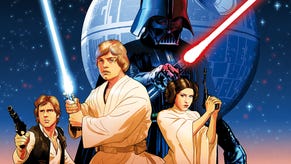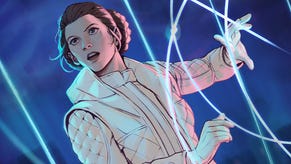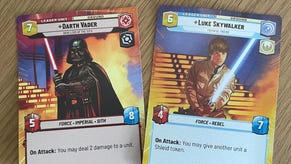How to play Star Wars: Unlimited: TCG’s rules, setup and building a deck explained
May the Force - and our guide - be with you.
Star Wars: Unlimited is the latest trading card game based on the iconic sci-fi series, bringing its battles between Jedi and Sith, X-Wings and TIE Fighters, and more to a competitive two-player battle. Whether you’re a card game expert or a Star Wars fan looking to pick up your first TCG, learning how to play Star Wars: Unlimited is easy - especially with our beginner’s guide to its rules.
Star Wars: Unlimited’s basic rules will be familiar to anyone who has played Magic: The Gathering, Pokémon or another popular trading card game. Each turn, players spend resources to play cards from their hand to the table, looking to reduce their opponent’s hit points to zero and claim victory. Those cards are packed full of familiar characters, places and moments from the movies, giving Unlimited the feel of an epic lightsaber duel or space dogfight.
How to play Star Wars: Unlimited
While learning how to play Star Wars: Unlimited is easy compared to many TCGs, there are some unique rules and ideas that make it different even if you have played the likes of MTG before. From having multiple different combat zones to represent ground and space battles to the way that rounds work as players alternate single actions before refreshing and drawing cards together, it’s definitely worth reading up on the official Star Wars: Unlimited rules to ensure you’re playing correctly.
Consider us your Jedi Master, as we lay out everything you need to know about how to play Star Wars: Unlimited below, from building your first deck to setting up, playing cards and how to win. May the Force (and a bit of card-draw luck) be with you.
How to build a Star Wars: Unlimited deck
Your Star Wars: Unlimited deck must include at least 50 cards in addition to a base card and leader card. Your base and leader are not counted as part of the 50 cards in your main deck, which comprises unit, event and upgrade cards. A maximum of three copies of each unique card can be included. Token cards used to mark statuses such as Experience and Shields are not counted as part of your deck and are kept separate.
Your leader and base include a total of three aspect icons on their cards. Aspect icons can be found near the resource cost listed on cards. There are six aspect icons, each associated with a colour and playstyle: Vigilance (blue), Command (green), Aggression (red), Cunning (orange), Heroism (beige/white) and Villainy (black). Some aspect icons are also referenced by ability text.
While cards with any aspect icons can be included in the same deck, cards with aspect icons that do not match your leader or base’s icons cost additional resources to play. Each icon that doesn’t match your base or leader requires an extra two resources on top of their regular cost. Note that this is per icon, not per card. Cards with aspect icons that match your leader and base cost their standard amount of resources as listed on the card. This rule is referred to as the aspect penalty.
The Star Wars: Unlimited rulebook recommends including between 30 and 40 units in your deck, divided between ground and space units, with 10 to 20 events and upgrades. Be sure to include some cards that only cost one or two resources to play, in order to help you get cards on the table during your first few turns.
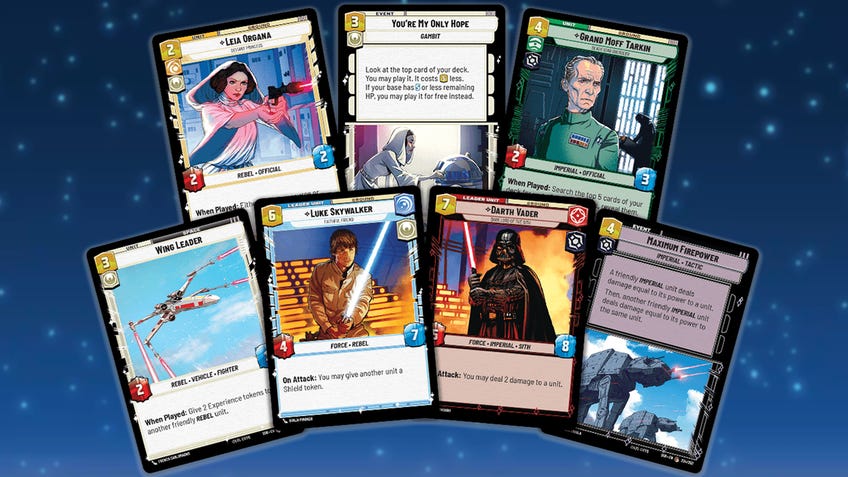
Setup
- Place your base card on the table, facing your opponent’s base card.
- Place your leader card below your base. Your leader starts the game on their non-unit side, represented by the horizontal side of their card.
- Randomly decide which player will start with the initiative and take the first turn of the game. They should take the initiative counter.
- Shuffle your deck and draw six cards into your hand. Each player may mulligan once, by shuffling their hand into their deck and drawing six new cards.
- Each player chooses two cards from their hand and places them facedown in their resource area to use as resources.
- You are ready to play Star Wars: Unlimited!
Star Wars: Unlimited rules
Rounds in Star Wars: Unlimited are made up of two key phases: the Action Phase and the Regroup Phase.
During the Action Phase, players take turns performing one action. Once one player chooses to pass, their opponent can continue taking actions until they also pass. When both players have passed, a Regroup Phase occurs before the next Action Phase begins.
Rounds repeat like this until a player’s base loses its final health point, meaning that player is eliminated and their opponent wins.
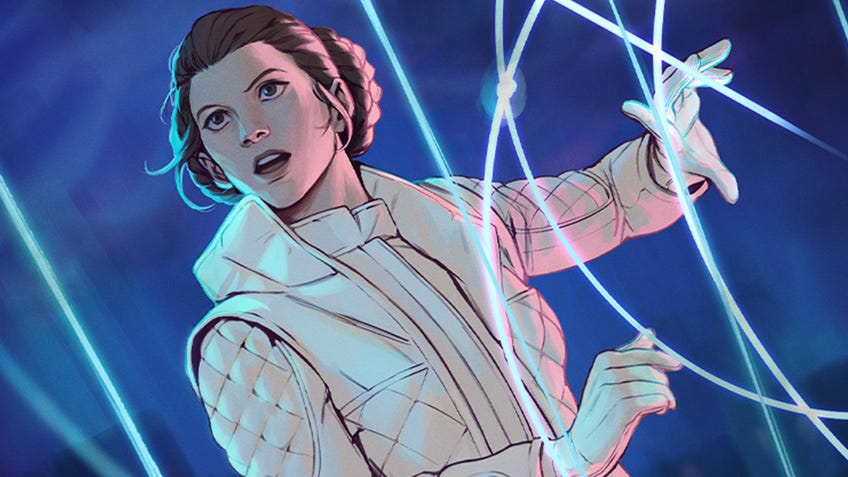
Action Phase
During the Action Phase, players alternate performing a single action, starting with the player with the initiative. Both players continue taking turns until a player passes. Their opponent can continue performing actions until they pass.
Actions available to players during the Action Phase including playing cards, attacking, using abilities and taking the initiative.
- Play a card
To play a card from their hand, players must pay its cost in resources. Resources are spent by exhausting facedown cards in your resource area - by turning them 90 degrees sideways, like tapping in Magic: The Gathering. There are three types of card in Star Wars: Unlimited: units, events and upgrades.
Units
Unit cards can be used to attack your opponent and their units, similar to creatures in Magic: The Gathering. When a unit card is played, it enters the game exhausted, meaning it cannot attack or use specific abilities until it is readied during the next Regroup Phase.
When a unit is played, it must be played to either the ground or space combat area, represented by separate zones on either side of the player’s base card. Unit cards indicate which combat arena they can be played to. Ground units can only attack ground units, and space units can only attack space units. Both ground and space units can attack an opposing player’s base.
Your leader card can also be played as a unit by meeting the requirements of its Epic Action ability text. The card flips from its horizontal side to its vertical unit side, joining the respective combat arena as with other unit cards. Unlike standard units, leaders enter the battlefield in a ready state - even if they were previously exhausted this round - allowing them to attack on the same turn they are deployed. If a leader card is defeated, it flips back to its horizontal side and exits the combat arena. Its other abilities can continue to be used, but it cannot be deployed as a unit again (as Epic Actions can only be used once per game).
Events
Events are single-use effects that trigger when they are played. Once an event card’s effects have been resolved according to the text on the card, the card is discarded to your discard pile immediately.
Upgrades
Upgrade cards must be equipped to unit cards. They specify which units they can be attached to, along with their effect, in the text on the card. Effects can include increasing a unit’s strength, health and/or giving them additional abilities.
Upgrade cards slide under their attached unit, keeping their bonus power and health icons - as well as any rules text - visible. When a unit with an equipped upgrade card is defeated, the upgrade card is sent to the discard pile along with the unit.
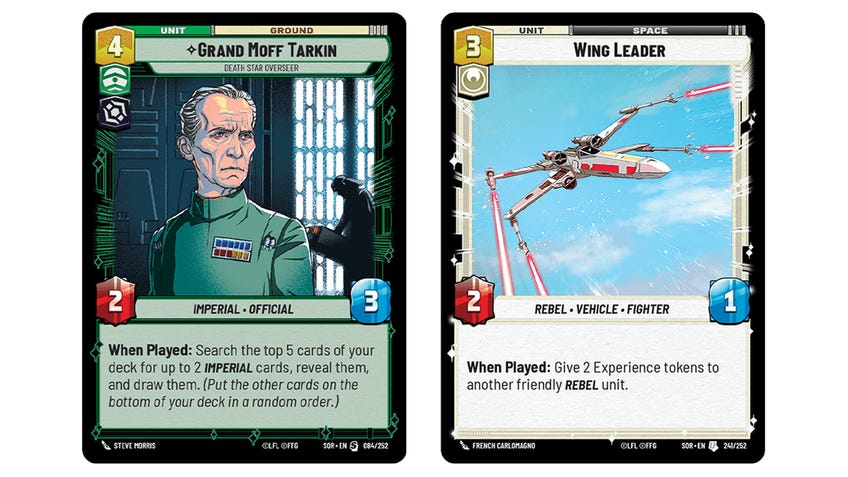
- Attack
When you attack, you can target an opponent’s unit or base to deal damage. To attack with a unit, you must be able to exhaust a readied unit - by turning it 90 degrees sideways. Ground units can only attack other ground units and space units can only attack other space units, but all units may attack a player’s base.
To attack, choose a single readied unit to be your attacker. Exhaust it. Choose your target: an opponent’s unit or their base. If any of your opponent’s units in the same arena (ground or space) have the keyword Sentinel, you must target Sentinel units before other non-Sentinel units or the opponent’s base. (Units with the keyword Saboteur can ignore the Sentinel keyword.)
If the attacking unit has the Saboteur keyword, they remove any shield tokens on the targeted unit. If the attacker has the Restore keyword, the attacking player heals their base health by that amount of hit points. Any additional abilities triggered ‘On Attack’ now take effect.
Units deal damage - equal to their power value - to each other simultaneously. If a unit receives more damage than it has hit points, it is defeated and discarded to the player’s discard pile.
When attacking a base, the base takes damage equal to the attacker’s power value. The attacker does not receive any damage in return.
- Use an ability
You can activate the abilities of a card by paying the required cost in resources and/or by exhausting the card, as directed by each card’s specific rules text. To pay resources, exhaust the required number of facedown cards in your resource area. To exhaust a card, turn it 90 degrees sideways - this stops it from attacking or using additional abilities until after the next regroup phase.
If an ability is labelled as an ‘Epic Action’, it can only be used once per game, regardless of cost.
- Take the initiative
Taking the initiative stops a player from performing any more actions during the current Action Phase - they effectively pass for the rest of the round.
Only one player may use their turn to take the initiative during the same action phase. If the player already has the initiative token, they keep it - ensuring that they will go first during the next Action Phase. If their opponent has the initiative token, the player takes it instead.
- Pass
A player can pass as their action to avoid taking another action. Unless they have already taken the initiative this round or their opponent has already passed, they can take other actions on their future turns during the current action phase.
However, if a player passes and their opponent immediately passes or takes the initiative as their next action, the current Action Phase ends and play moves onto the Regroup Phase.
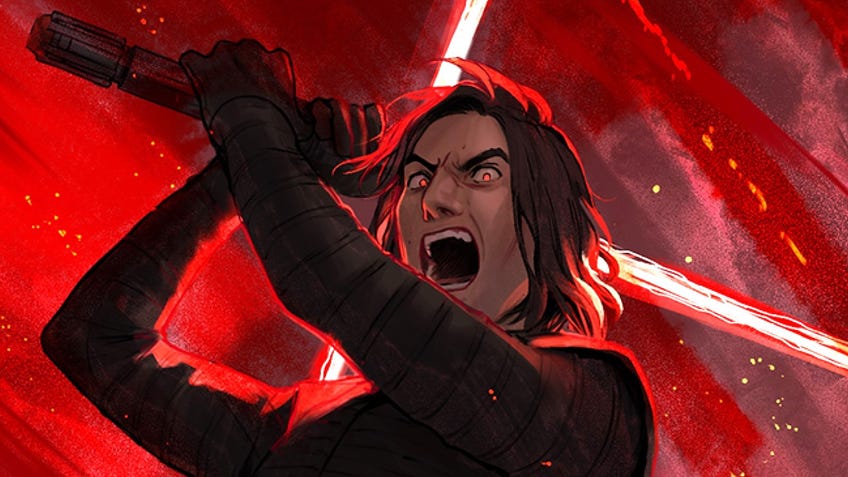
Regroup Phase
During the Regroup Phase, both players draw cards, choose whether to add a resource to their resource pool and ready any exhausted cards. Once the Regroup Phase is over, play returns to the next Action Phase, beginning with the player with the initiative token.
The Regroup Phase follows these steps in order.
- Draw cards: Both players draw two cards from the top of their deck.
- Add a resource card: Each player chooses whether to add one card from their hand to their resources, playing it facedown to their resource area if so. A maximum of one resource can be added per regroup phase, but players do not have to play a resource. The player with the initiative token decides whether to add a resource first, before their opponent performs their resource step.
- Ready cards: Both players ready any exhausted cards, turning them 90 degrees so they are oriented vertically. This allows cards to use abilities and attack again during the next Action Phase.
How to win
Each base starts with 30 hit points. The first player to reduce their opponent’s base to zero hit points is the winner.
If a player exhausts their deck and would go to draw another card, they do not lose immediately. Instead, their base suffers three damage for each card they are unable to draw.
Star Wars: Unlimited keywords explained
- Ambush: Cards with the Ambush keyword may immediately ready and attack an opponent’s unit when played. If there are no enemy units to attack when the card is played, it cannot be readied and remains exhausted.
- Grit: Cards with the Grit keyword gain +1/+0 - giving them an additional power - for each point of damage they have.
- Overwhelm: If a unit with the Overwhelm keyword attacks an opposing unit and deals damage in excess of that unit’s remaining health, any excess damage is dealt to the controlling player’s base.
- Raid: Units with the Raid keyword gain additional power when attacking, equal to the number noted next to the Raid keyword. For example, Raid 3 would grant three additional power when attacking.
- Restore: When a unit with Restore attacks, the controlling player heals their base equal to the Restore value. For example, Restore 3 will grant three health back to the player’s base.
- Saboteur: Saboteur units ignore the Sentinel keyword on opposing cards - allowing them to freely attack other cards or the opponent’s base - and destroy all shield tokens on the unit they attack before dealing damage.
- Sentinel: If a card has the Sentinel keyword, attacking units in the same combat arena (ground or space) must target the card before units without Sentinel or the player’s base. If there are multiple cards with the Sentinel keyword, the attacking player chooses which unit to target.
- Shielded: When a unit with the Shielded keyword is played, it gains a shield token. Each shield token prevents the damage of one attack; remove the token when attacked and negate any damage.
